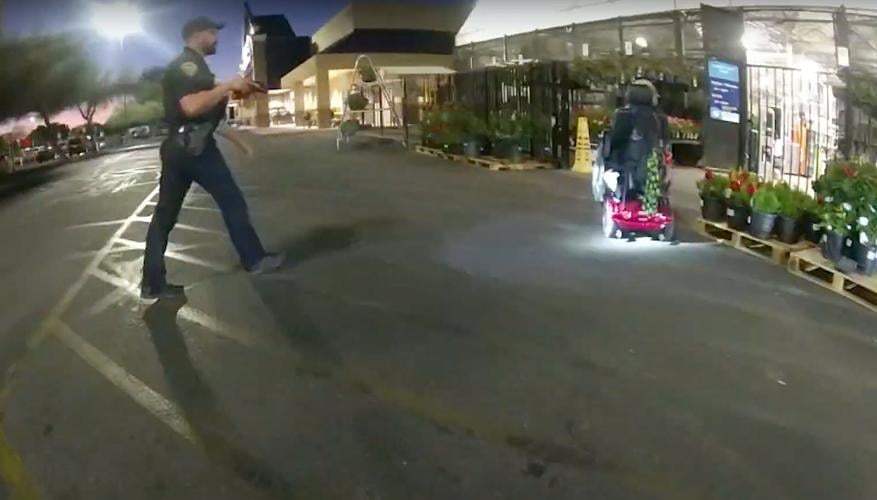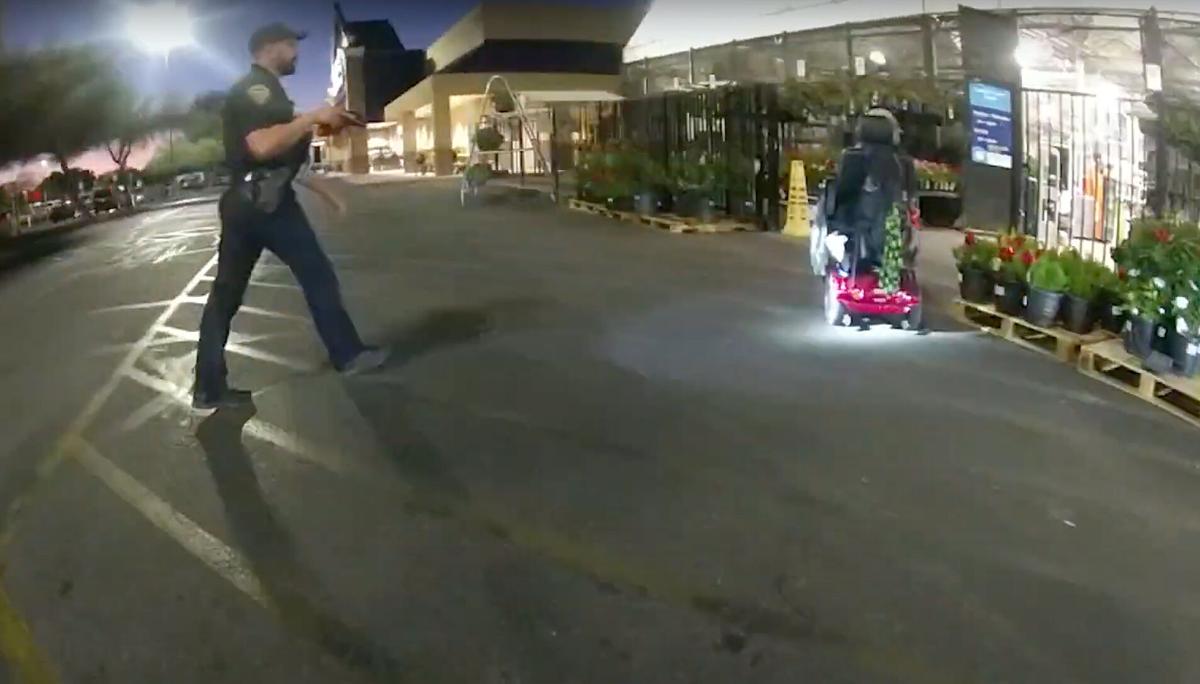It's not over yet.
That's what local officials tell me when I ask about the case against former Tucson police officer Ryan Remington.
They say that even though on Tuesday a judge dismissed the manslaughter charge against Remington. He's the then-officer who in November 2021 shot and killed a shoplifting suspect in a motorized scooter outside a Tucson Lowe's store.
Pima County Attorney Laura Conover tells me her office is still considering the case. The fact that a second Pima County grand jury hearing the case declined to issue charges does not mean county prosecutors have stopped pursuing it, she said.
Tucson Police Chief Chad Kasmar says that federal investigators may take a look for a possible Justice Department case.
Maybe, but it feels to me like we're simply seeing a well-known truth revealed again: Our justice system is deferential toward law enforcement officers who use violence. By law or through custom, police receive a benefit of the doubt that the rest of us don't, even after apparently egregious acts.
What caught people's attention about Remington's killing of Richard Lee Richards was how avoidable it looked in the video from a fellow officer's body-worn camera. You've probably seen it.
Remington was in Tucson Police Department uniform but working for Walmart, when Richards scootered out of the store, carrying a stolen toolset and a knife that he displayed when confronted by a Walmart employee. A walking-pace chase ensued across parking lots for more than five minutes, with Richards refusing to stop and eventually starting up the ramp to the garden center at a nearby Lowe's.
That's when Remington fired nine shots from behind at Richards, who fell out of the chair dead.
Former Police Chief Chris Magnus said at the time that Remington's "use of deadly force in this incident is a clear violation of department policy and directly contradicts multiple aspects of our use of force training." He fired Remington, and Kasmar has backed up that decision.
Law gives good cover to officers
Conover said the last time an officer was brought to trial in Pima County for an on-duty shooting stemmed from an incident in 1989. In other words, there is a longstanding practice here of finding police shootings justified.
She took a long, roundabout route in coming to an initial manslaughter charge against Remington. She assembled prosecutors from outside Pima County, hired experts to review the scenario, and then had a seasoned prosecutor make the initial grand jury presentation on Aug. 24, 2022.
Conover also pointed out to me Friday the state law that determines when a police officer can use deadly force. To my eye, it seems to give officers in Remington's position good legal cover.
A part of that law, ARS 13-410, says an officer can legally use deadly force to "effect the arrest or prevent the escape from custody of a person" who:
- Has committed, attempted to commit, is committing or is attempting to commit a felony involving the use or a threatened use of a deadly weapon.
- Is attempting to escape by use of a deadly weapon.
In the low-speed pursuit that ended in the death of Richards, he was carrying a knife. To the outsider's point of view, of course, he posed a minimal threat to anybody as he scooted up to the garden center.
Uncommon defense role at grand jury
As a member of the Tucson Police Officers Association, Remington is represented by attorney Mike Storie in the criminal proceedings at court and in his planned challenge of the decision to fire him.
Storie, a skilled veteran of these sorts of cases, convinced Pima County Superior Court Judge Danelle Liwski that the prosecutor who initially brought the case before a grand jury, Chris Ward, did so unfairly, in violation of state rules of criminal procedure.
When you read the transcript of the hearing, you find Liwski carefully weighing issues such as whether Richards functionally committed aggravated assault by the way he displayed his knife in the run-up to the shooting.
She even found fault in the way prosecutor Ward presented a report provided to him by Storie, Remington's attorney. It's uncommon that the defense gets any say in a grand-jury presentation, but sometimes it happens when a defendant knows in advance a grand jury will be considering charges against him and his attorney offers exculpatory evidence.
Storie protested the way the report he provided was presented to the grand jury — read in complete, boring detail and offered as a "defense" report. The prosecution's reports, in contrast, were labeled "independent" by Ward, Storie said.
Liwski concluded: "I feel as though the defense's expert was minimized, the state's expert was emphasized as an independent report, not once but twice."
So, through Storie's efforts, Remington got to provide his own report to the grand jury and to argue that it must be presented in precise fairness. Since that didn't happen, he won a second grand jury hearing and a rejection of charges, leading to Tuesday's dismissal.
Reaction specific to this scenario
It's worth noting that Tucson police officers have shot and killed people six times since Remington shot Richards. None of these killings has provoked nearly as much outrage as the Richards case.
In part, this is because Tucson police and the new Pima Regional Critical Incident Team release video of the shooting incidents relatively soon afterward. Most of the time, these videos have shown a clear danger to the officers or the public that justified the killing.
The reaction to the killing of Richards doesn't reflect a sort of kneejerk, anti-police instinct. It's specific to this scenario.
Despite the unique character of Richards' killing, the pursuit of justice, it appears, will end up where it does in most of these cases: In the civil courts. Richards' sister, Victoria, has sued the city of Tucson and Remington, arguing the killing was a civil rights violation.
"Remington did not need to defend himself or any other person at the time he shot Richards," the suit argues. "Richards did not pose an imminent threat of death or serious bodily injury to anyone."
In response, of course, the city has asserted "qualified immunity," another of those protections available to police officers (and other government employees) in the court system. This is a higher legal threshold requiring plaintiffs to show not just that an officer broke the law but that the officer should have known he or she was breaking clearly established law.
What all this makes me think is that the criminal case is functionally over, thanks to the law and customs benefiting officers. The only real remaining questions are whether Remington will be able to get his job back and how much the city will pay to make the civil lawsuit go away.






